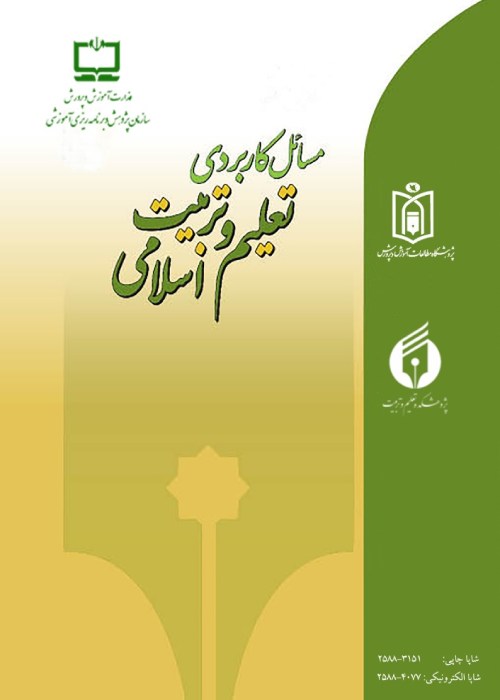A Content Analysis of High School Din va Zendegi Textbooks Based on the Principles and Methods of Education Extracted from the Book Al Mahjat Al Beyzaa Fel Tahzib al Ahya (with Emphasis on Monjiyat & Adat)
Author(s):
Abstract:
Objective
The aim is content analysis of high school Din va Zendegi textbooks based on the principles and methods of education extracted from the book Al Mahjat Al Beyzaa Fel Tahzib al Ahya (with emphasis on Monjiyat & Adat).Method
Method in this research was descriptive. The approach of this study is a combination of quantitative and qualitative methods. The target population was Din va Zendegi textbooks at high school and pre-university level in 2011 academic year. The sample included the texts and the section called Gamhaye Akhar (Last Steps), which appeared at the end of each lesson. The content analysis checklist was used for data collection. The reliability of this instrument which was calculated through kappa coefficient was equal to 0.52, and was significant. In addition, the validity of the instrumentation was approved by experts. The data were analyzed using descriptive and inferential statistics (frequency, percent, and chi-square).Findings: The findings show that the educational principles in the four textbooks have been used differently and this difference is significant but this difference was not observed in Gamhaye Tarbiyati (Educational Steps). The content of all these textbooks (except for grade one textbook) focuses on the principles of wisdom and justice, and attention to the principle of wisdom increases in the next grades. In grades two and three, the principle of Tazakor (reminder) has received equal attention. Furthermore, the methods of teaching sagacity, self-purification and strength expression have been emphasized in all grades and this is more noticeable in grade one. In three textbooks and in the section Gamhaye Tarbiyati, the principle of Tazakor (reminder) has the highest and the principle of justice has the lowest frequency. It can be concluded that these differences are in accordance with textbook writers objectives in developing the section Gamha (Steps) .On the whole, it can be said that the textbooks have an intellectual orientation, while the section Gamhaye Tarbiyati has an emotional orientation.
Keywords:
Language:
Persian
Published:
Journal of Applied Issues in Islamic Education, Volume:1 Issue: 1, 2016
Page:
61
magiran.com/p1752949
دانلود و مطالعه متن این مقاله با یکی از روشهای زیر امکان پذیر است:
اشتراک شخصی
با عضویت و پرداخت آنلاین حق اشتراک یکساله به مبلغ 1,390,000ريال میتوانید 70 عنوان مطلب دانلود کنید!
اشتراک سازمانی
به کتابخانه دانشگاه یا محل کار خود پیشنهاد کنید تا اشتراک سازمانی این پایگاه را برای دسترسی نامحدود همه کاربران به متن مطالب تهیه نمایند!
توجه!
- حق عضویت دریافتی صرف حمایت از نشریات عضو و نگهداری، تکمیل و توسعه مگیران میشود.
- پرداخت حق اشتراک و دانلود مقالات اجازه بازنشر آن در سایر رسانههای چاپی و دیجیتال را به کاربر نمیدهد.
In order to view content subscription is required
Personal subscription
Subscribe magiran.com for 70 € euros via PayPal and download 70 articles during a year.
Organization subscription
Please contact us to subscribe your university or library for unlimited access!



